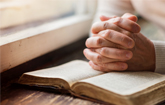
The Weitzman Will Launch New Special Exhibition Space for Semiquincentennial Commemoration; Telling Stories of Jewish Contribution and Struggle During the Revolution, Featuring Rare Artifacts from Abroad
PHILADELPHIA, Nov. 13, 2025 /PRNewswire/ -- To mark the 250th anniversary of the United States, the Weitzman National Museum of American Jewish History (The Weitzman) will open a landmark semiquincentennial exhibition, and reveal its new special exhibition gallery, in April 2026.
The First Salute is an untold, high-stakes, true story sparked by two key moments on the high seas that tipped the scales of the American Revolution and its founding principles. Set against the backdrop of the tiny Caribbean island of St. Eustatius, this riveting tale explores how religious liberty, Jewish trade merchants, and the cruelty toward the Jewish community by a debt-ridden British admiral converged at a pivotal time in world history, and impacted the trajectory of the Revolutionary War.
Think Hamilton meets Pirates of the Caribbean. From Jewish expulsion from Spain and Portugal in the 15th century, to secret shipments of gunpowder disguised as tea by a network of Jewish merchants in the Caribbean in the 18th century, this tale of resilience, ingenuity, survival, and the promise of freedom still resonates today.
This semiquincentennial exhibition will feature original films, rarely seen artifacts, storytelling, and an immersive video experience that situates visitors within three of the four original walls of St. Eustatius's synagogue and Jewish cemetery that still stand today.
This exhibition expands the understanding of the American Revolution by including the greater Atlantic World, and illustrating the connections between North American and Caribbean Jewish communities, offering new insights into people and events that helped secure America's independence.
"The First Salute reminds us that America's strength lies in its enduring commitment to religious liberty," said Dan Tadmor, President and CEO of The Weitzman. "Two hundred and fifty years after America's founding, this exhibition connects historical events to present-day challenges. We hope that visitors walk away considering the roles of faith, community, and discrimination — in both historical and contemporary contexts."
Dan Tadmor is available for interviews as are the exhibition's curator, Dr. Josh Perelman, and scholarly advisors Drs. Jonathan D. Sarna (Brandeis University, ret.), Pamela Nadell (American University), and Laura A. Leibman (Princeton University).
The Island Where It Happened
On November 16, 1776, St. Eustatius — a Caribbean island with a proportionally large population of Jewish merchants (25-30% of the island's European population of about 1,000 people), drawn there by a culture of religious tolerance and economic freedom — became the first international entity to recognize the United States. This historical moment happened when the American brigantine Andrew Doria sailed (from Gloucester, N.J., just outside of Philadelphia) into the island's busy harbor carrying a copy of the Declaration of Independence and flying the Grand Union Flag. As was naval tradition, the ship fired its cannons as an announcement — 13 times for 13 new states.
The island's Dutch governor, knowing full well his next action could spark a diplomatic crisis with Britain, responded with his own 11-time cannon salute, two fewer than he had received, in the traditional communication of welcome.
This "first salute" was the first international recognition of the United States of America.
The Antisemitic Blunder that Cost the British the War
St. Eustatius was a crucial trading hub, where many Jewish merchants supplied American forces with gunpowder, often disguised as tea and rice. England sent Admiral George Brydges Rodney on a mission to halt trading; he called the island "more harmful to England than all the arms of its most potent enemies" and wrote that "had it not been for this infamous island, the American Revolution could not possibly have subsisted."
But Rodney made a catastrophic blunder.
The debt-ridden admiral spent five months looting and plundering, with a cruel focus on the Jewish population – his forces literally stripped them of money and valuables and took 30 men from their families with no notice to be deported, jailed, or sent back to England to be charged with treason.
But, while in St. Eustatius Rodney missed the Battle of Fort Royal (1781), allowing the French fleet to sail north and blockade Yorktown, sealing Britain's defeat. The rest is history.
It raises a striking question — did one man's antisemitism and avarice help turn the tide of the American Revolution?
Beyond St. Eustatius
Using these fascinating tales as a jumping-off point, The First Salute will:
- Address little-known but essential Jewish participation in the American Revolution
- Spotlight Jewish diversity and diaspora, including the Sephardic communities (whose ancestors were expelled from Spain and Portugal) who lived in the Caribbean and throughout North America in the lead-up to and during the early days of American independence
- Tell the story of Jewish exiles who — bound by faith, trade, and family — used their international connections to support the fight for American independence and religious liberty
- Expand the story of the American Revolution to include the Caribbean, including:
- The island of Nevis, where Alexander Hamilton was raised and tutored by a Jewish schoolmistress, and learned to recite the Ten Commandments in Hebrew.
- Recife, Brazil, where the Portuguese expelled the Jewish population, some of whom became the first openly Jewish community in what would become the United States (in New Amsterdam aka New York in 1654)
- Explore intersections between Jewish values and the ideals enshrined in America's founding documents, such as:
- The Hebrew Bible verse from Leviticus on the Liberty Bell: "Proclaim Liberty throughout all the Land Unto all the inhabitants thereof" Leviticus 25:10
- Explain how European religious persecution and the search for religious liberty drew Jews to the Caribbean
Key Artifacts on Display
The First Salute will feature rare documents and significant historical objects from public and private collections across the United States that explore this story, this era, and Jewish life during this time period. Artifacts include:
- "Rodney Roll" with Moses Myers's name on it, 1781, National Archives, United Kingdom – Admiral Rodney's inventory of St. Eustatius's inhabitants and their belongings. Moses Myers, one of the Jewish people who were stripped of their belongings, is featured on the page visitors will see.
- Rations receipt of Mordecai Sheftall, 1778, Weitzman National Museum of American Jewish History, 1985.26.4 – an Army rations receipt belonging to Jewish patriot Mordecai Sheftall who was commissary and then colonel for the Continental Army living in Savannah, Georgia. He was imprisoned during the war by the British who unsuccessfully tried to force him to eat treyf (non-kosher food) including pork, with utensils greased with pork fat, because he was Jewish.
- Currency, South Carolina, 1777, Weitzman National Museum of American Jewish History, 1984.30.6 – Frances Salvador became the first Jew elected to public office when he was selected for South Carolina's Provincial Congress in 1774. Two years later, he also became the first Jew killed in the Revolution. This Patriot currency included Hebrew writing on it to prevent counterfeiting.
- Barnard Gratz, Charles Peale Polk (1767-1822), ca. 1792, Oil on canvas, Museum of the American Revolution – the Gratz family were prominent Philadelphians, as well as patriots who were involved in trading with the Caribbean including St. Eustatius. Their story and connections to this period in history will be featured prominently in the exhibition.
Additional Resources
The First Salute will come to life through special programming and educational offerings:
- Student programming will include field trips to examine religious liberty and allyship, and programs exploring the intersections between American civic values and traditional Jewish values.
- Public programming will extend the exhibition's impact through cultural events in person and online.
- Jewish American Heritage Month, led by The Weitzman nationally each May, will include educator and social media resources dedicated to America's 250th.
- Group tour experiences will create a deeper understanding of America's 250th for tourists in the Historic District in Philadelphia.
- Special exhibition-related merchandise in the Museum Store
Key Moment for Museum
This 4,500-square-foot-exhibition will mark the first in the Weitzman's new special exhibition space on its second floor. This opening will mark a milestone in the Museum's strategic vision to reimagine its core exhibition and special exhibition schedule.
The First Salute is made possible with Financial Assistance provided by the Commonwealth of Pennsylvania, Honorable Josh Shapiro and support from Lilly Endowment Inc. through its Religion and Cultural Institutions Initiative which propelled this exhibition's development. Additional funding has been provided by America250PA, Mayor Cherelle L. Parker & the City of Philadelphia, the Maimonides Fund, the Institute of Museum and Library Services, Betsy and Philip M. Darivoff, and other generous individuals.
The Weitzman has been working on The First Salute with a team of leading scholars of early American Jewish history and Caribbean studies who are available for interviews, including professors Jonathan Sarna, Pamela Nadell, and Laura Arnold Liebman, internationally recognized design firm G&A (formerly Gallagher & Associates), and media producer Lorem Ipsum.
The First Salute will be open from April 23, 2026 to April 2027.
PRESS PHOTOS
Exhibition Photos ; Credit lines enclosed
Museum images; Credit lines enclosed
ABOUT THE WEITZMAN NATIONAL MUSEUM OF AMERICAN JEWISH HISTORY
Established in 1976, and situated on Philadelphia's Independence Mall, the Weitzman National Museum of American Jewish History is the only museum in the nation dedicated exclusively to exploring and interpreting the American Jewish experience. The Weitzman presents educational programs and experiences that preserve, explore, and celebrate the history of Jews in America. Standing as a joyful bulwark against antisemitism, bigotry, and hate, The Weitzman serves to connect Jews more closely to their heritage and to inspire in people of all backgrounds a greater appreciation for the diversity of the American Jewish experience and the freedoms to which Americans aspire. www.theweitzman.org
SOURCE National Museum of American Jewish History






Share this article